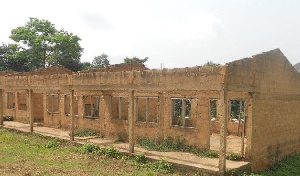Research conducted in Ghana between 2014 and 2017 revealed that the country loses $25 million monthly as a result of unfinished projects.
The study showed that about a third of projects started between 2011 and 2013, were never completed.
It also established that on average, unfinished projects had about 65 percent of the work completed and 56 percent of the contract sum disbursed.
SSD/FNOQ
Read the full story originally published on December 12, 2018, by ghananewsagency
It is estimated that Ghana loses up to $25 million annually via unfinished projects. This amount is equivalent to 667 additional three-unit classroom blocks per year which would accommodate an estimated 70,000 students, a study has shown.
The study was conducted in Ghana between 2014 and 2017 by Dr. Martin J. Williams, Associate Professor of Public Administration at the Blavatnik School of Government, the University of Oxford in collaboration with the National Development Planning Commission (NDPC) and the Local Government Service Secretariat (LGSS).
The study shows that about a third of projects started between 2011 and 2013, were never completed.
Presenting a paper on Spatial Infrastructure Data in Ghana, Dr. Williams said the costs of unfinished projects to Ghana, both economically and socially were huge, as shown by the administrative data that already exists within the government.
These administrative data included hardcopy reports or soft copy word documents submitted by local governments to MMDAs or the NDPC as part of normal annual performance reports.
By collating and transforming this data into a database covering about 14,000 projects across a wide variety of agencies and funding sources such as the District Assemblies Common Fund (DACF), GETFund, Internally Generated Funds, and central government funding.
The study established that on average, unfinished projects had about 65 percent of the work completed and 56 percent of the contract sum disbursed.
He said 18.6 percent of MMDAs investment expenditure was on projects that were unlikely to ever be finished, noting: “that’s almost a fifth of infrastructure budget going straight into waste”.
He said, “these are mostly small projects that are being done by the MMDAs, so these are six-room classroom blocks, boreholes, wells, administrative blocks; the kind of projects that should take between four and 12 months on average”.
The study also found that contrary to popular opinion that unfinished projects were due to corruption and politics or elections, the findings showed that neither of these was the cause.
It said more work has been done on the projects than had been paid for and project completion rates were also consistent across the years.
Rather districts were spreading their resources for projects too thinly on too many projects than they could afford to complete every year, this notwithstanding, projects were more effectively delivered through local government than central government.
He said the findings were a demonstration of how administrative data could be valuable for policy preparation purposes as well as for academic work.
Business News of Monday, 12 December 2022
Source: www.ghanaweb.com

















